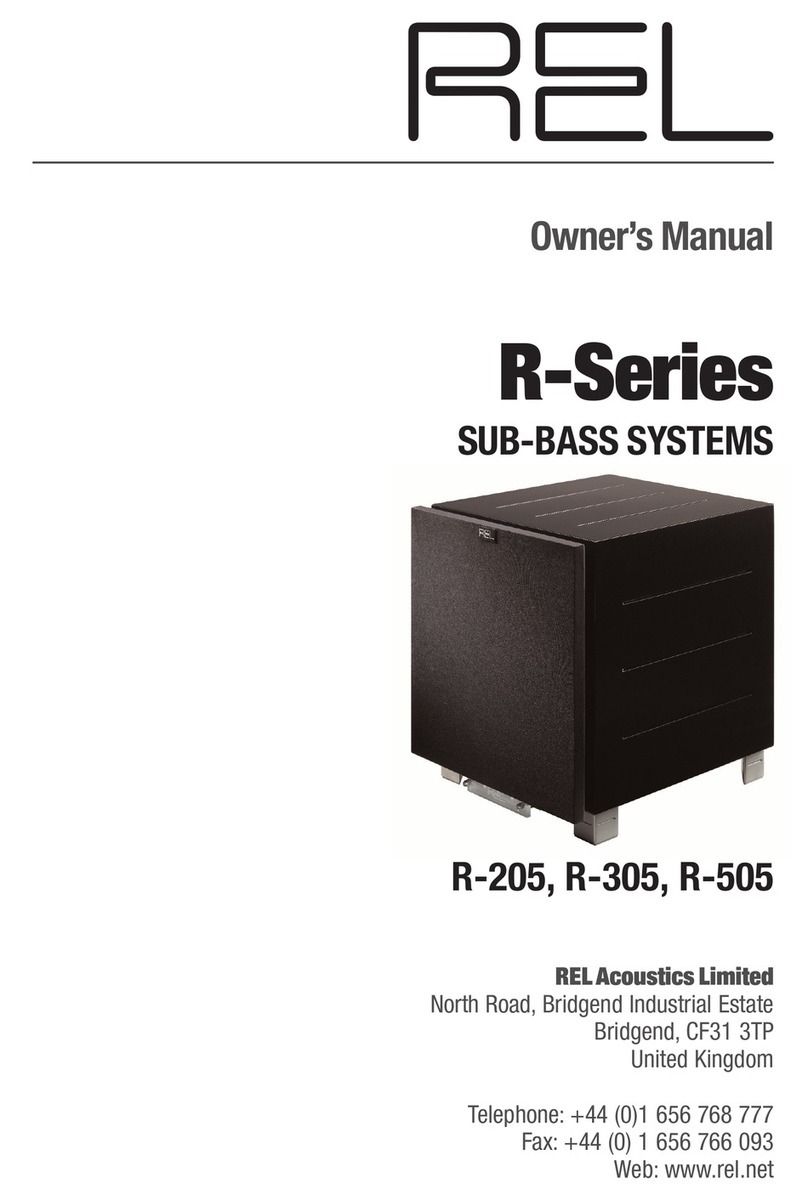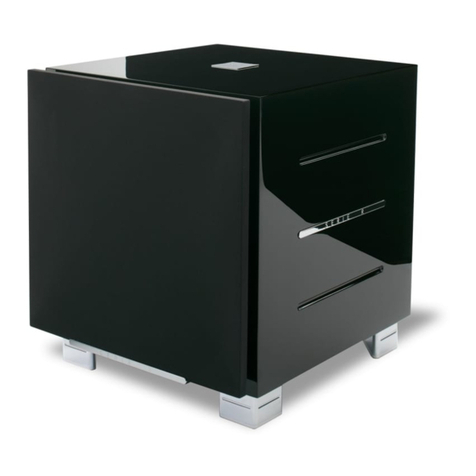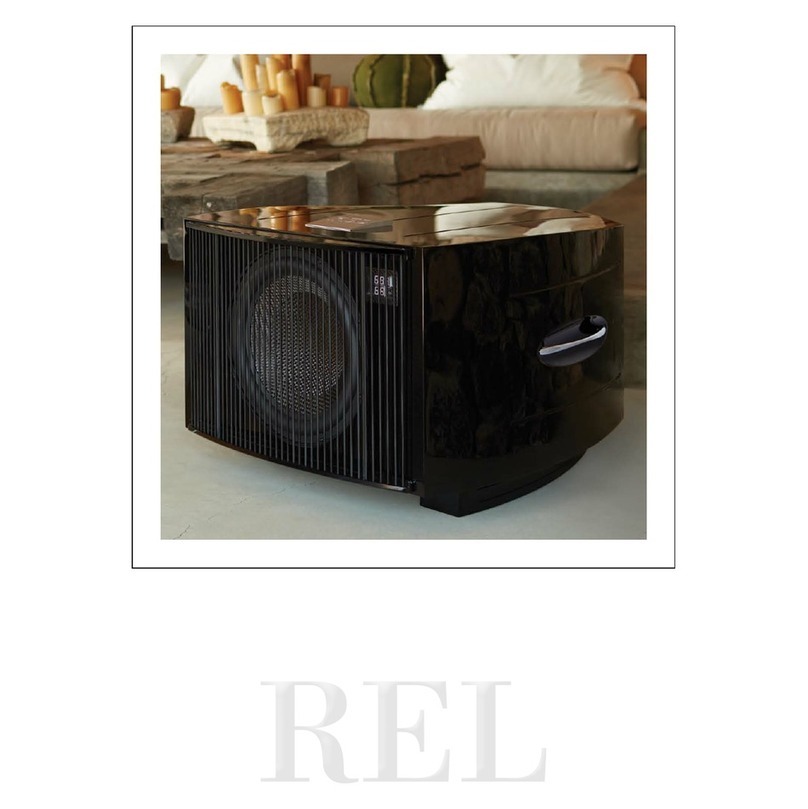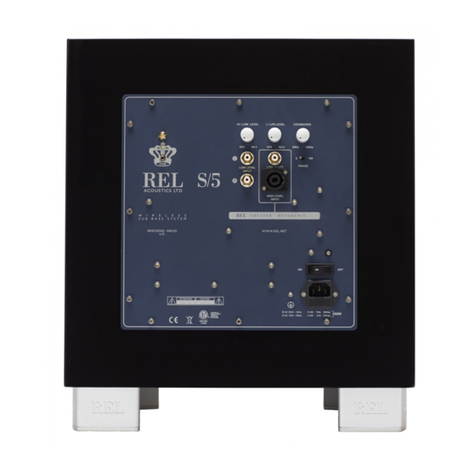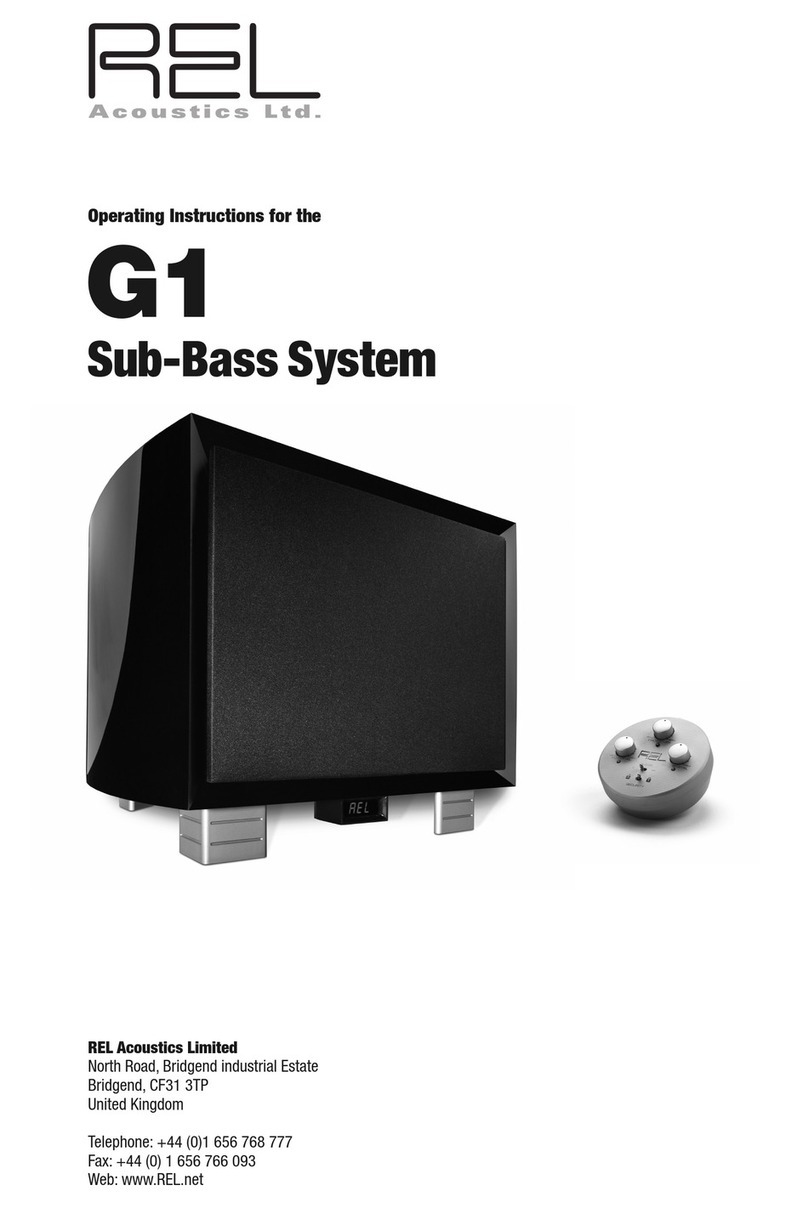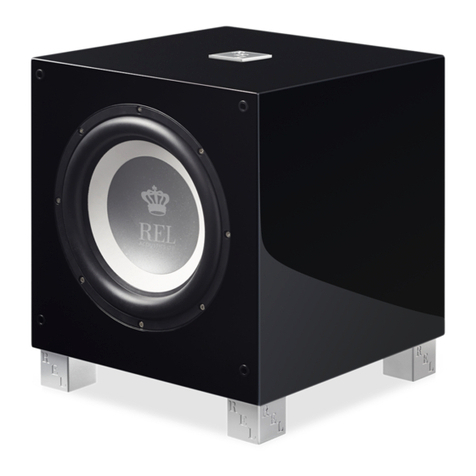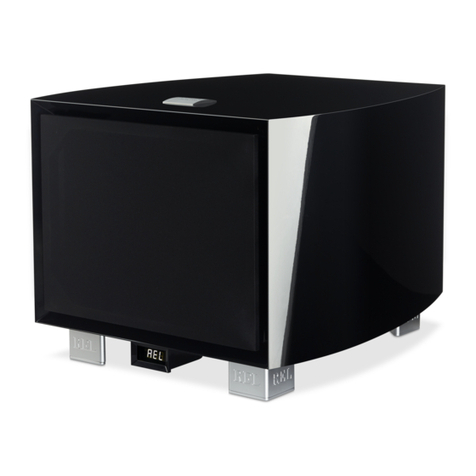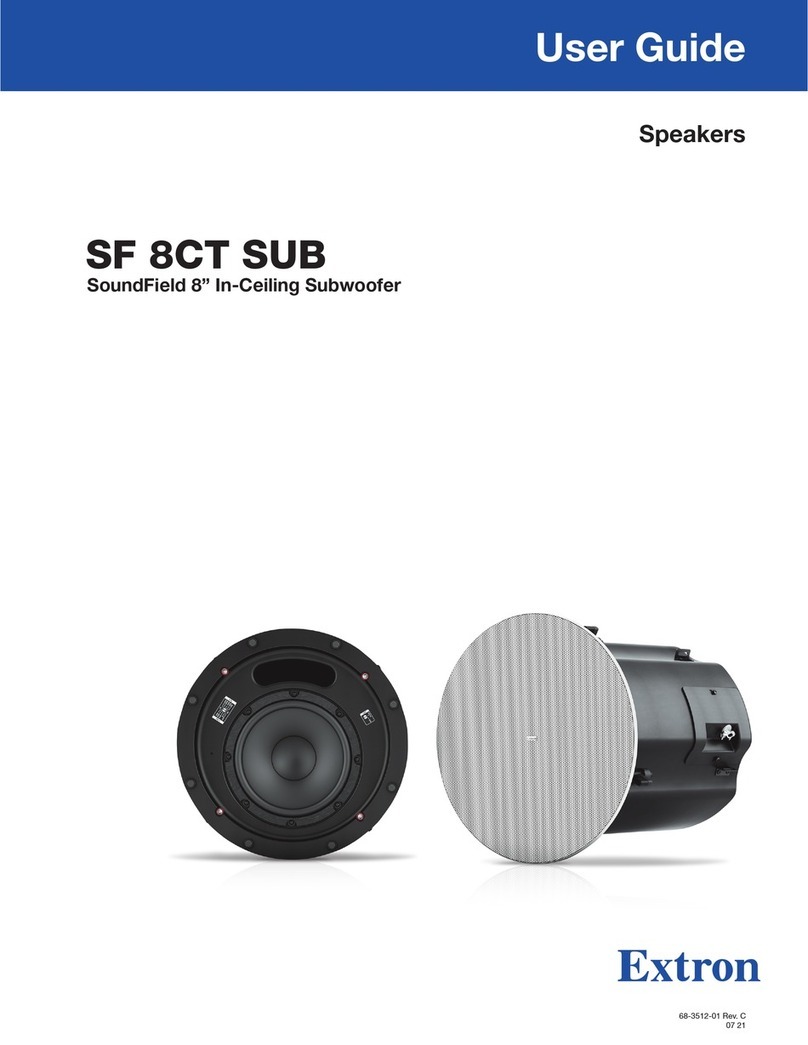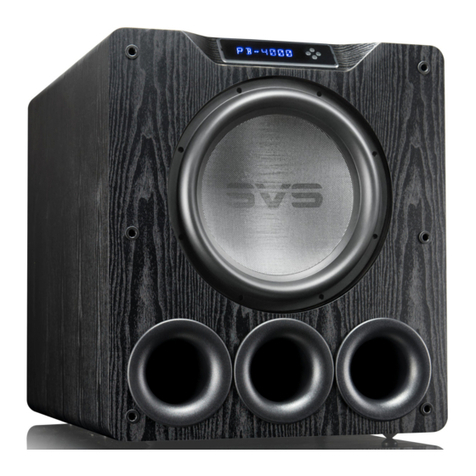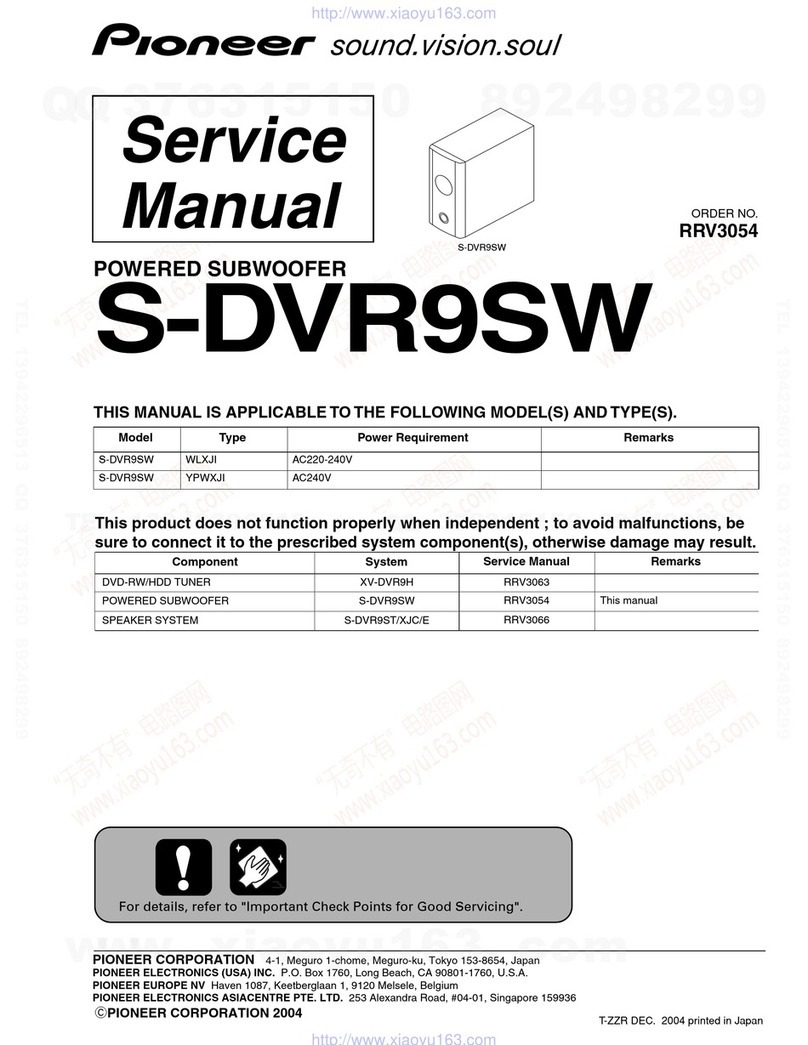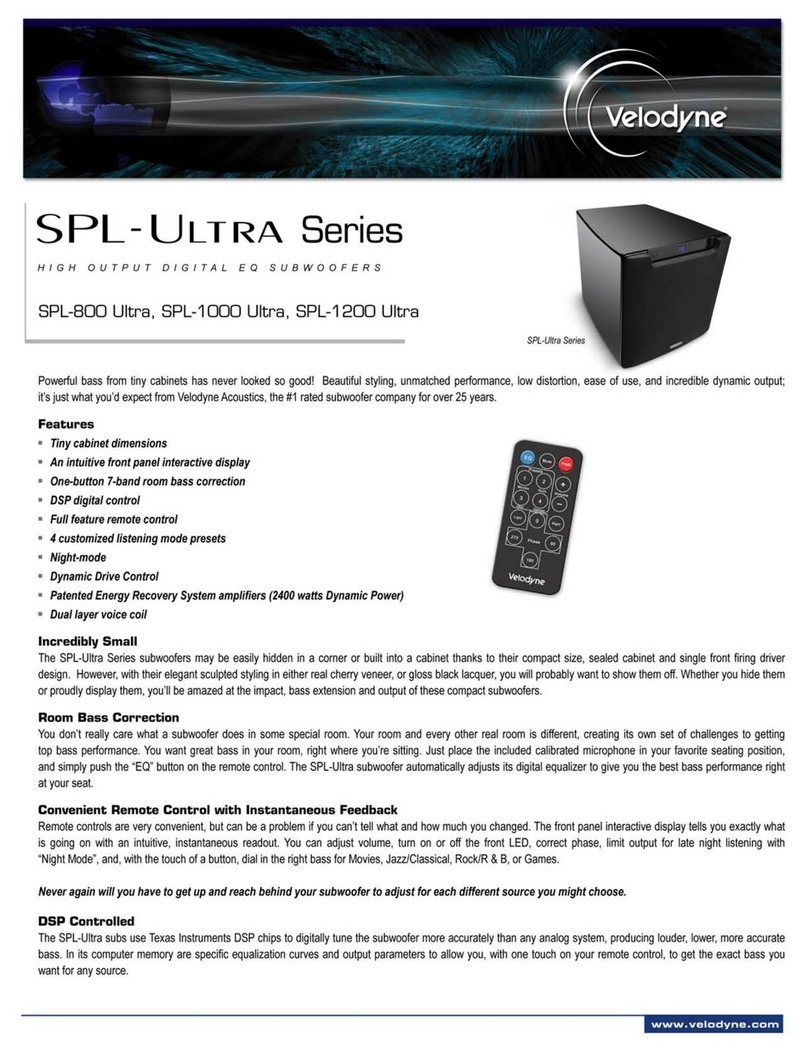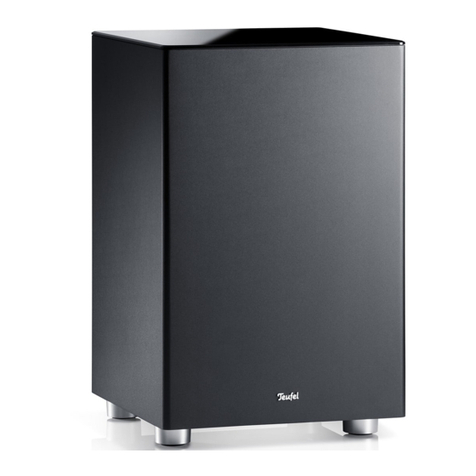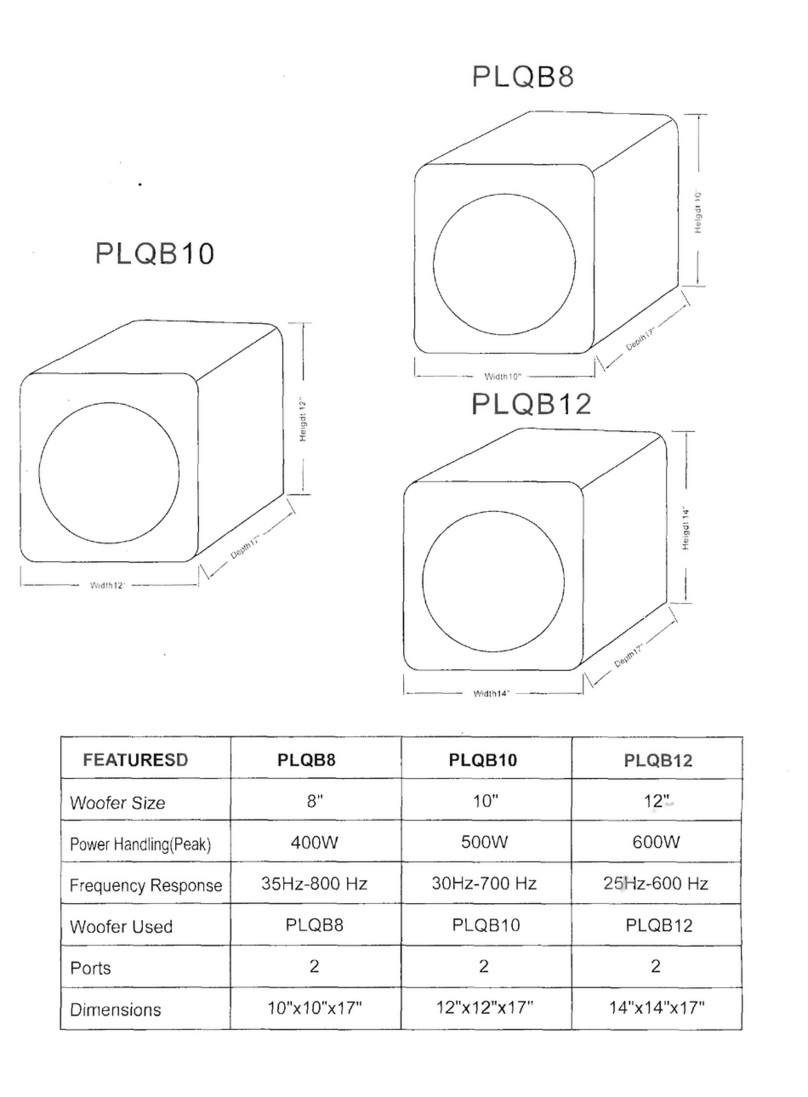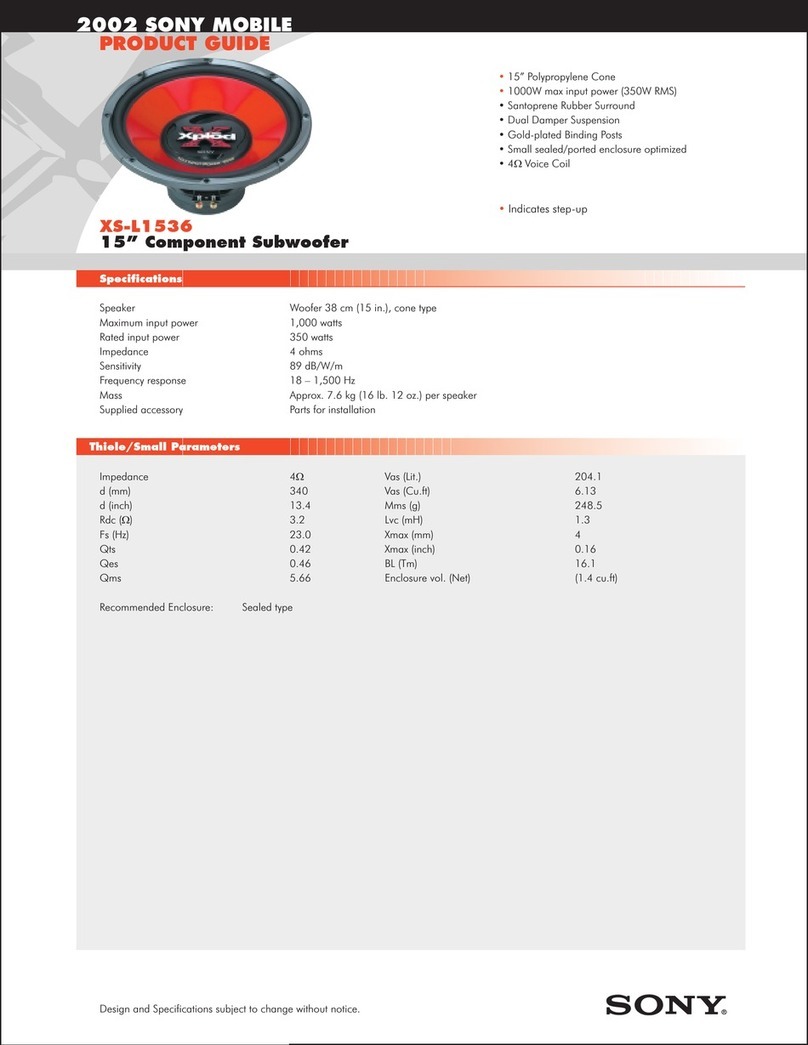5
Numerous versions of the cabinet were constructed and evaluated using test instruments and, in parcular,
the human ear. Extensive bracing runs the full internal height of each side panel, across the enrety of the
crucial top panel, and includes a single fore-and-a integrang brace much like the spars on a ship that
results in an exceponally quiet cabinet. Spacing of these spars is based on Fibonacci mulples, ensuring
that resonance cancellaon is spread across a multude of frequencies. The resulng performance delivers
exceponally low bass, replete with weight and authority, along with tremendous transient speed. The ulmate
performance of Gibraltar is only realized through precise cabinet form and precise assembly techniques.
Divide (Very Rapidly) and Conquer!
The input filter topology (crossover) used in Gibraltar is new and, to the best of our knowledge, the fastest
analog filter ever devised for a sub-bass system at about 4 milliseconds rise me. We ulize a second-order
Bessel funcon for preservaon of impulse response that crosses over as low as 20 Hz. Addionally, we
have a second filter placed at approximately 250 Hz that gently removes midrange and high frequencies
from the mix, but allows for maximum speed of the main filter within its operang range. Crossover is
tunable in 1 Hz increments.
Gain is adjustable for REL Reference High-Level connecon (preferred) or standard low level input from the
main preamplifier. In high-level mode, input signal is derived at the end of the amplificaon chain, producing
the most natural and full expression of the voice of the main system. This allows the REL to blend effortlessly
with the main speakers. Convenonal low-level connecon is also supported through rear panel RCA jacks.
Power Corrupts
Or so the saying goes. Actually, a lack of power is frequently what corrupts or limits the pure pistonic
performance of a sub. REL employs an expensive, but in our experience, ulmate circuit topology for
Gibraltar. A linear, Class AB power amplifier using 6 MOSFETs for the G-1 and four for the G-2 backed by
state of the art power supply and a power transformer with vast over-specificaon. Expensive? Yes,
unabashedly so. However, it is both the finest and most reliable design approach we know of for these
virtually military specificaon amplifiers. Execuon is absolutely first cabin including subtle touches such
as use of telecommunicaons grade printed circuit boards, high current output devices and ght
voltage regulaon.
